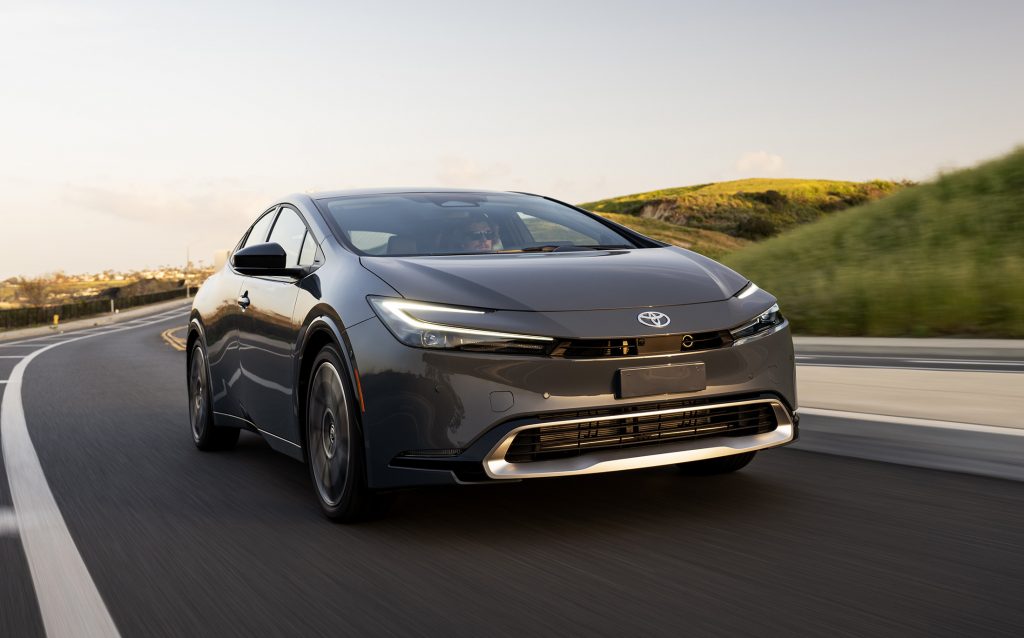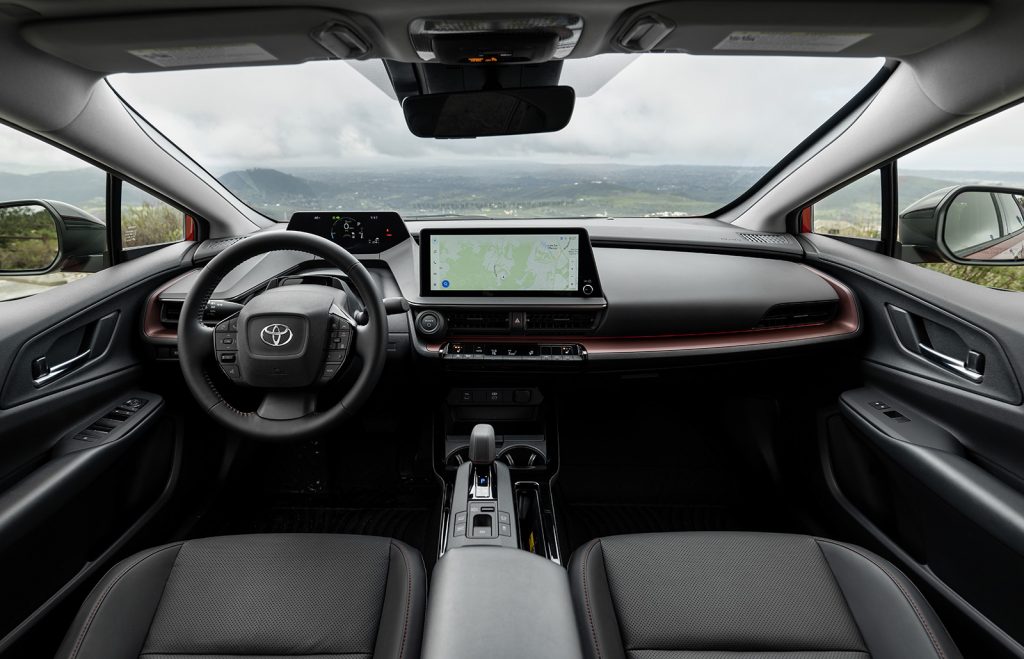Cargazing
By Derek Price
The timing couldn’t be better for Toyota.
Just as other automakers are scaling back their ambitious plans for electric vehicles because — surprise, surprise – most American buyers aren’t ready to accept the downsides of a battery-powered car, there’s a brand-new generation of Prius offering an alternative.
If someone needs a car strictly for local trips, EVs makes perfect sense. But in a nation where many of us enjoy road trips across the fruited plain, EVs are a fruited pain. They add hours to long highway drives for charging stops, if you’re lucky enough to find chargers available and functional along your route.
I’ve said for a long time that if you can only have one car to help the planet, right now it makes the most sense to get a plug-in hybrid like I’m testing this week, the all-new Prius Prime.
When you fully charge it in your garage, the Prius Prime can drive 44 miles on electric power, enough for some commuting and daily errands without burning a drop of gas, just like an EV.
And when you need to take longer trips, you don’t have to subject yourself to the pathetic current state of America’s charging infrastructure. You just fill it up with gas and keep going.
Even if you never charge it up, the wonks in Washington rate this new Prius Prime for 48 mpg in combined city and highway driving. If you do, it’s rated for the equivalent of 114 mpg.
Its cheaper sibling, the standard Prius without plug-in ability, earns an even better mileage rating of 57 mpg combined, presumably because it doesn’t have to lug around the Prime’s 284-pound battery pack everywhere it goes.

A fresh design for 2023 makes the Toyota Prius prettier than it’s ever been before. It looks sportier and more athletic, a good match for its re-engineered driving feel.
The reason to buy a Prius has always been the gas mileage, plain and simple.
The reason to buy this new-generation Prius is that it’s appealing for non-numeric reasons, too.
It looks spectacular, for starters.
Unlike previous Prius designs, which have always been intentionally frumpy by resembling a wedge of blue cheese, this one seems to take its inspiration from classic sports cars. It’s sleek, sexy even.
Its driving feel is just as surprising.
While it still won’t win any races, this redesigned Prius drives with a taut, rewarding, quick-responding feel that every one of its predecessors lacked. Where older Priuses wallowed in corners, this one feels composed.
And when you step on the accelerator, it actually feels like it wants to go somewhere, compared to the reluctant, petulant whine of older versions.
Sadly, it doesn’t offer the instant kick-in-the-pants acceleration of a pure EV, but it does close the gap in a big way.

The Prius’ new cabin is impressively roomy in the front seats, and its unusual instrument cluster location is something more new cars should adopt.
Inside, the cabin is more of a mixed bag.
The new look is definitely modern, with a big, clean, sweeping dash and optional 12.3-inch touchscreen to run today’s requisite digital toys. Unfortunately, its sexy styling with the sloping roof cuts into rear headroom and limits visibility out the back window. A digital rearview mirror can help solve the visibility problem, at least.
I do love the non-traditional layout of the Prius’ instrument cluster. It’s perched up above the steering wheel, high on the dash where the driver’s eyes never have to stray far from the roadway.
It also feels impressively roomy, especially in the front seats where head, shoulder and knee room all seem weirdly airy in a vehicle designed primarily for its gas mileage.
Overall, it’s the perfect vehicle for people who are on the fence about buying an EV.
America may be better prepared for the electric revolution in the future, but until that day, plug-in hybrid cars will be the more palatable option for many people. And this new-generation Prius is the most impressive of them all.
Pricing starts at $27,650 for the standard Prius or $32,675 for the Prime.
At A Glance
What was tested? 2023 Toyota Prius Prime XSE Premium ($39,170). Options: Digital rearview mirror ($200), solar charging roof ($610), advanced technology package ($1,085), special color ($425), heated rear seats ($350). Price as tested (including $1,095 destination charge): $42,935
Wheelbase: 108.3 in.
Length: 181.1 in.
Width: 70.2 in.
Height: 56.3 in.
Power: 2.0-liter four cylinder engine plus electric motor (combined 220 hp)
Transmission: Continuously variable
Fuel economy: 48 mpg combined
RATINGS
Style: 9
Performance: 6
Price: 7
Handling: 6
Ride: 8
Comfort: 8
Quality: 9
Overall: 9
Why buy it?
A complete redesign makes the 2023 Prius more efficient, better looking and more enjoyable to drive than before. The plug-in hybrid Prime version has an electric range of 44 miles.
